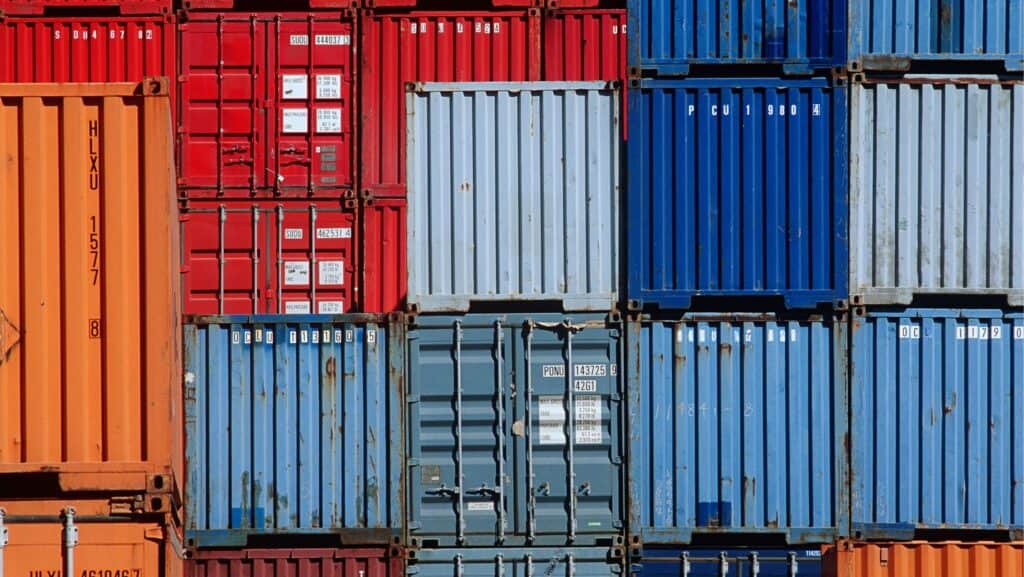Shipping containers are a common sight at New Zealand ports, industrial sites, and construction sites around the world. These steel boxes are used to transport a wide variety of goods across long distances, and they play an important role in global trade and the overall economy.
However, shipping containers face a variety of environmental challenges during transit, including exposure to extreme temperatures. In this blog post, we’ll explore how shipping containers are protected from heat and cold plus why you should consider a shipping container for your business.
1. Insulation
One of the most important factors in protecting shipping containers from extreme temperatures is insulation. Insulation can help keep the temperature inside the container stable, reducing the risk of damage to sensitive goods. There are several types of insulation that you could employ within your shipping container to increase protection from both extreme cold, including:
Spray Foam Insulation: This type of insulation is applied to the interior of the container walls and ceiling, creating an airtight seal that prevents heat transfer. Spray foam insulation is an effective way to protect against both heat and cold, and it can be applied quickly and easily.
Fibreglass Insulation: This type of insulation is made from glass fibres that are woven together into a thick, fluffy material. Fibreglass insulation is effective at insulating against heat and cold, and it is relatively inexpensive. However, it can be difficult to install, and it may not be as durable as other types of insulation.
Rock Wool Insulation: Rock wool insulation is made from volcanic rock that has been heated and spun into thin fibres. This type of insulation is highly effective at protecting against both heat and cold, and it is also fire-resistant. However, due to its high cost, many container owners are able to find other, more cost-effective materials. Additionally, rock wool may not be as widely available as other types of insulation.
2. Heat-Reflective Coatings
Another way to protect shipping containers from extreme temperatures is by applying a heat-reflective coating to the exterior of the container. The specialised paint that is applied to the corten steel walls is well-known to protect the container against the elements.
These coatings are typically made from reflective materials like aluminium or titanium, and they reflect a large percentage of the sun’s rays, reducing the amount of heat that is absorbed by the container. Heat-reflective coatings can also help protect against cold temperatures by reflecting the heat back into the container, keeping the interior warmer.
3. Ventilation
Proper ventilation is also important for protecting shipping containers from extreme temperatures. Without adequate ventilation, heat can build up inside the container, causing damage to sensitive goods. On the other hand, in cold temperatures, inadequate ventilation can cause moisture to build up inside the container, leading to rust and other forms of damage. To prevent these issues, shipping containers are typically equipped with vents that allow for air circulation. This helps to regulate the temperature inside the container and prevent damage to goods.
4. Refrigeration
For goods that require a specific temperature range, refrigeration is the best way to protect them from extreme temperatures. Refrigerated shipping containers, also known as “reefers,” are equipped with a built-in cooling system that can maintain a specific temperature range.
This allows for the safe transportation of temperature-sensitive goods like food and pharmaceuticals. Refrigerated containers can maintain temperatures as low as -20 degrees Celsius or as high as 20 degrees Celsius, depending on the needs of the goods being transported.
Most items that are transported around the globe require some sort of optimum temperature. A refrigerated container is a perfect solution even if the climate you require isn’t excessively warm or cool. While the container is travelling, you’re not aware of the temperatures the ship will endure on it’s journey, so it’s best to ensure you have temperature stable the entire journey.
ContainerCo
At ContainerCo, we pride ourselves on providing an extensive range of shipping containers for hire or purchase. Our range of 10ft, 20ft and 40ft containers can be used for various purposes, including shipment, storage or construction, to name a few. Featuring more than just containers in our product range, we also sell accessories and parts for shipping containers to ensure your container can be maintained and repaired after prolonged use.
Offering specialised containers along with dry standard variations, ContainerCo’s containers include refrigerated, dangerous goods, high-ball, open-top and side-opening options. As a fully-established shipping container company, we also have the facilities to modify purchased shipping containers. In addition, our specialised team can assist you with altering containers into workspaces, cafes, tiny homes or construction site offices.
We can serve Kiwis across the country with facilities operating in Auckland, Tauranga, Christchurch, Wellington and Waikato. So next time you require a shipping container, hire or buy yours at ContainerCo today!
Contact us at 0508 732 873 or request a free online quote today!

